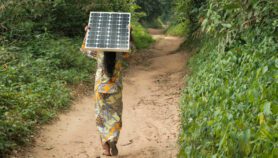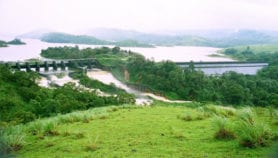By: Sophie Hebden
Send to a friend
The details you provide on this page will not be used to send unsolicited email, and will not be sold to a 3rd party. See privacy policy.
Energy-efficient buildings, industrial processes and transportation could reduce the world’s projected energy needs in 2050 by one third, and be crucial in controlling global emissions of greenhouse gases, according to the International Energy Agency.
In a report published today (22 June) the agency describes a series of scenarios showing how key energy technologies can reduce emissions of carbon dioxide, the greenhouse gas which is most responsible for climate change.
It argues that emissions can be curbed if the world makes greater use of low-energy technologies for electricity generation and transport — such as nuclear power and biofuel vehicles.
Technologies that capture and store carbon dioxide emitted from power stations and industrial processes could contribute to about one fifth of emission reductions possible by 2050, says the International Energy Agency (IEA).
These predictions are based on the assumption that each tonne of carbon dioxide that is not emitted into the atmosphere will save companies US$25 on an international carbon trading market.
This would provide an incentive to boost expensive research and development of low-carbon technologies.
According to the IEA, adopting all the technologies reviewed in the report could bring rising greenhouse gas emissions back down to current levels by 2050.
Most of the projected increases in emissions will be in developing countries, where they are predicted to be three and half times 2003 levels if current energy policies remain unchanged.
"Fast-growing developing countries offer opportunities to accelerate technology learning and bring down the costs of technologies," says the report.
Claude Mandil, executive director of the IEA says developed countries should help developing countries deploy low-energy technologies, helping them to ‘leapfrog’ the development process and implement them quickly.
Developing countries are not bound to reduce their emissions by the Kyoto Protocol on climate change, but several Asian nations have signed a pact with the United States to "develop, deploy and transfer" clean technologies (see Asia-Pacific climate pact launched).
The report was produced in response to a call made by the G8 leaders at their annual summit last year (see Climate change after Gleneagles).













